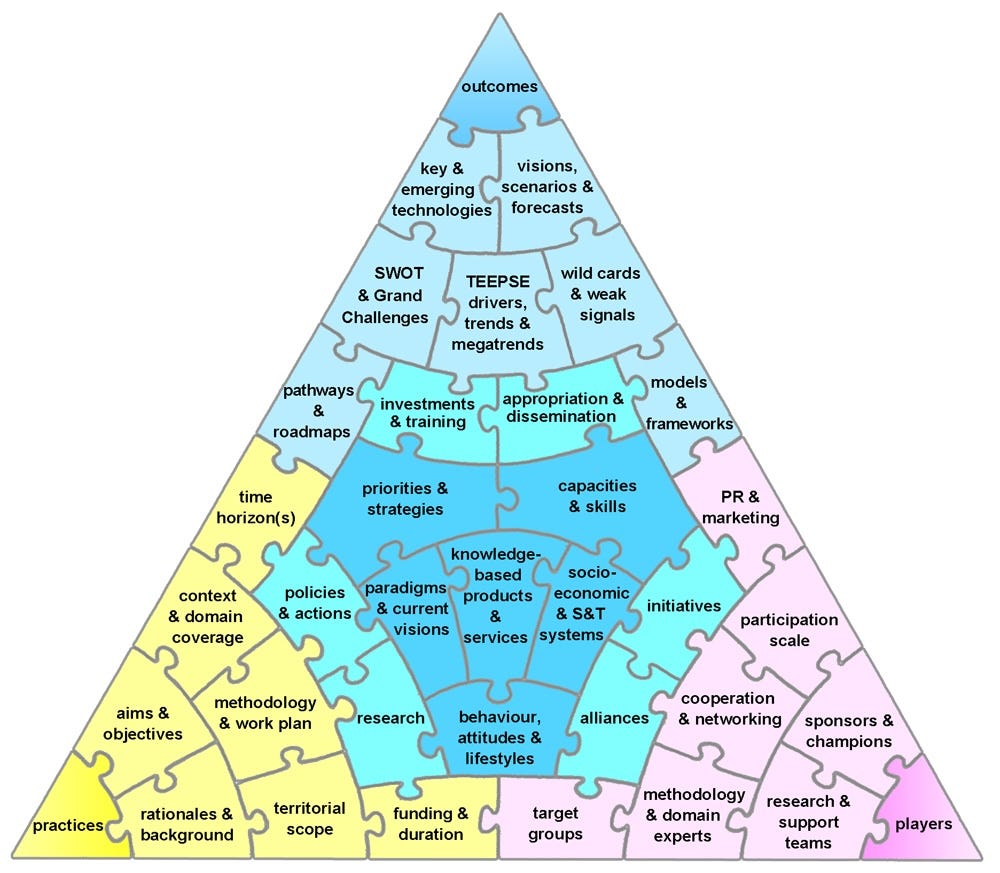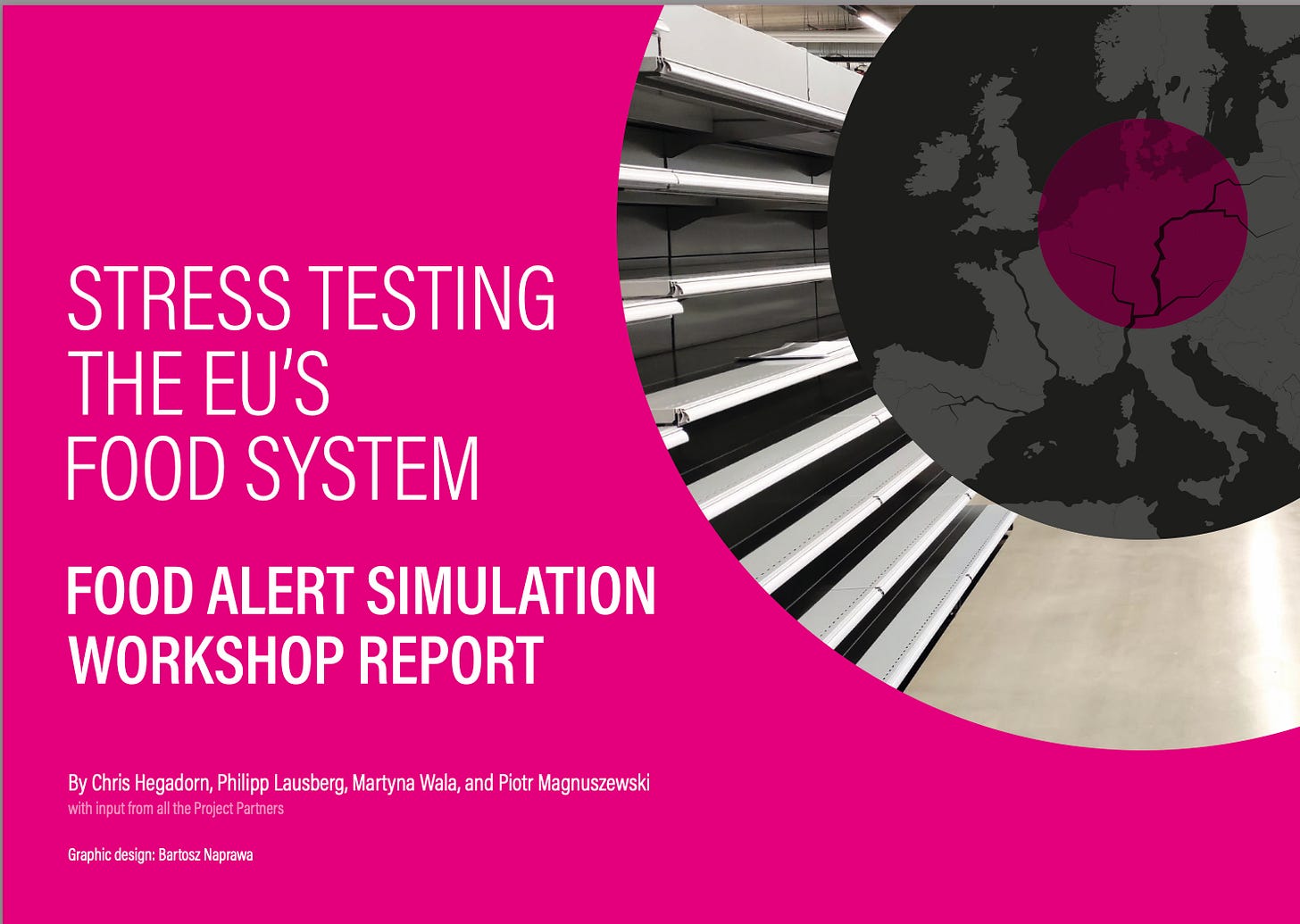Global Shield Briefing (27 March 2024)
Futures analysis, stress-testing food systems, and improving government understanding of global catastrophic risk
This regular briefing highlights the latest policy, research and news on global catastrophic risk (GCR).
In this briefing, we’re looking for some imagination. Imagination is what makes today’s challenges into tomorrow’s triumphs. The lack of imagination is what makes today’s reality into tomorrow’s crises. Our collective imagination is therefore a strategic asset. Whether it’s for speculating potential futures, stress-testing our current systems, or avoiding catastrophe altogether. This briefing showcases some innovative solutions for how governments can build their capacity for imagination. Without it, policymakers and leaders will not be able to navigate through the future.
Peering over the horizon

World Futures Day – hosted by five futurist organizations to discuss the future – was held on 1 March. And there seems to be no shortage of new efforts in “futures analysis”, which is the practice of imagining the future using techniques like forecasting, horizon-scanning and scenario planning. The UN Futures Lab – a network of futures efforts across the UN system – is seeking contributions to understand the value of foresight methodologies to address real-world challenges and achieve impactful results.
Earlier this month, a set of former US federal and industry officials formed the Federal Foresight Advocacy Alliance (FFAA), a group advocating for the establishment of a “U.S. Federal Office of Strategic Foresight.” And in an interesting use of futures analysis, the Forecasting Research Institute applied forecasting techniques to better explain disagreements about existential risk from artificial intelligence. They found that disagreements between ‘skeptics’ and ‘concerned’ experts were largely explained by when they perceived AI would reach human-level capability: the concerned group’s median date was 2045 and the skeptic group’s median date was 2450.
Policy comment: Futures analysis can be a useful tool because it provides governments with a way to develop and interpret a range of possible futures. Risk managers and intelligence analysts’ jobs generally require them to be more conservative and shorter-term in their thinking, but futures analysis exercises can be more conducive environments for speculative or long-term future imagination. So it allows for discussing and mainstreaming the consideration of global catastrophic risk. A key challenge with government-led futures analysis is ensuring its implementation meaningfully shapes policy processes. Ideally, the process must directly engage senior policymakers, where they are involved in the thinking, not just receiving the outputs. The question or topic being addressed must be framed by the real-world interests of policymakers and shaped to address an explicit policy need. The policy implications and recommendations should be clearly drawn out, with a mechanism to integrate futures analysis into the policymaking process. To be effective, futures analysis must be well coordinated and implemented across government, and be aligned with other GCR analysis efforts.
Stress-testing food supplies
In February, a number of think tanks came together for a food crisis simulation to consider policy frameworks and gaps for European food supply chains. In the report released on 27 March, the project partners recommend efforts that alleviate acute food shortages, make the European food sector more resilient and sustainable, and build more resilient supply chains. In addition, the report highlights the importance of building an ‘integrated food systems strategy’ that involves more holistic, systemic thinking about the risk to food security.
A new report by ALLFED investigates the potential for feeding the world in a catastrophe through non-agricultural methods. It finds that “all macronutrients can be produced by both fermentation and chemical synthesis, independently from agriculture.” This finding is useful in the various possible catastrophes that lead to severe reductions in normal global agricultural production, such as scenarios where sunlight is greatly reduced for a lengthy period.
Policy comment: Governments should stress-test critical infrastructure – such as food and water systems, energy grids and the financial sector – for global catastrophic risk scenarios. The food system is a particularly important area for stress-testing because it is vulnerable to a range of threats, including supply chain disruptions, malicious biological attacks, climate change, and abrupt sunlight reduction scenarios, like nuclear winter. A global food shock would be catastrophic to human and animal health, and could lead to dangerous second-order geopolitical and political instability. A range of hypothetical but plausible scenarios should be developed to test how the food system would perform. The results would help identify weaknesses in national and global food supply chains as well as challenges with mass feeding during a crisis. Ultimately, the government must use these insights to develop a plan for increasing resilience, such as incentivizing investments in alternative and climate-resilient foods and building strategic stockpiles of food, seeds and agricultural inputs. It is not clear that any government systematically stress tests its food supply in an all-hazards manner.
Admitting global catastrophic risk is a problem

Global Shield staff, Rumtin Sepasspour and Courtney Tee, have a new piece in The Bulletin of the Atomic Scientists on how governments can take steps that improve their own understanding of global catastrophic risk. Our view is that governments will be more likely to take action once they admit to themselves that they have a problem. This critical first step helps to inform the preventive and preparedness activities that are needed. We propose a four-pronged approach – risk assessment, futures analysis, intelligence and warning, and scientific and technical research – for governments to take this course of action themselves.
Here is an extract:
Governments need to study and conduct research internally, ultimately taking their own steps to understand and assess global catastrophic risk. This should include building a holistic picture of global catastrophic risk, analyzing its various impacts, understanding its drivers, developing monitoring systems that keep tabs on a changing risk landscape, and conceptualizing potential pathways and scenarios for catastrophe.
Properly understanding global catastrophic risk requires clear direction, strong analytical capabilities, and dedicated commitment. Yet, to date, no government has a holistic or a systematic effort towards better understanding global catastrophic risk.




